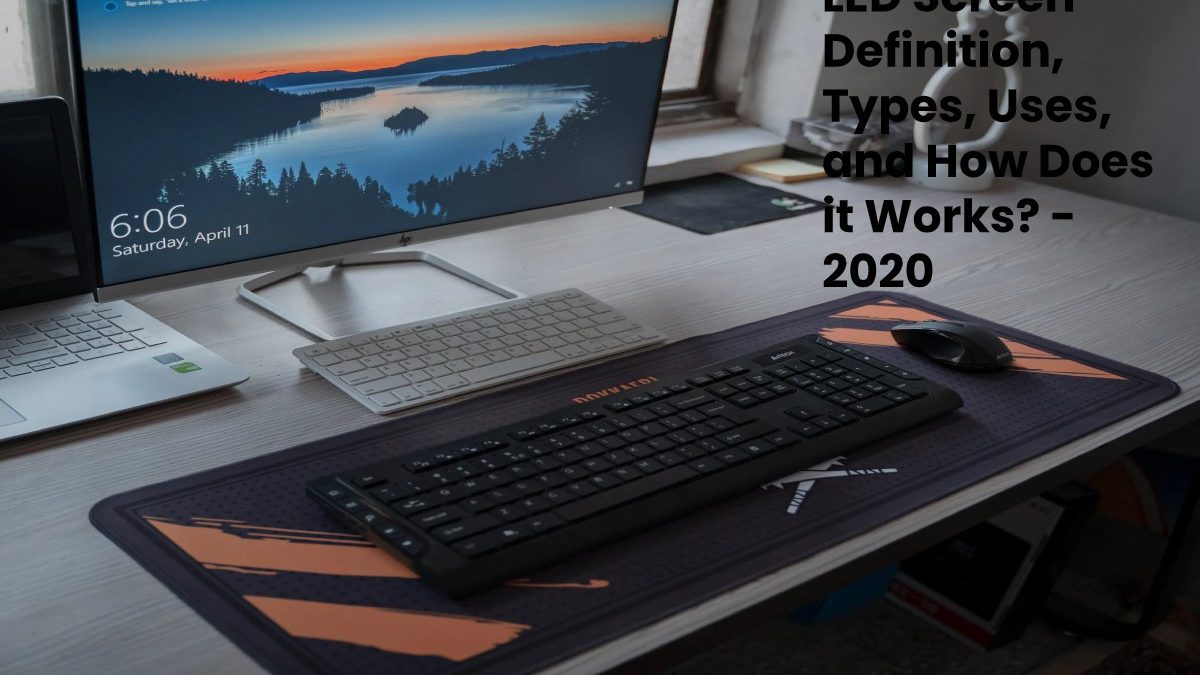Table of Contents
LED screen Definition
An LED Screen is an electronic device made up of LEDs. Which can display data, information, images, videos, etc. To viewers close to it.LED is an acronym for Light Emitting Diode, an electronic device that allows free continuous flow in one direction and emits light. In the case of an LED television, these acronyms simply describe the technology used to illuminate the screen. An LED television is, in fact, a television with a liquid crystal display (LCD) with LED taillights. Rather than the taillights of a traditional cold cathode lamp (CCFL).

How an LED TV Works
The electronic LED screen is made up of pixels using modules or panels of LEDs (light-emitting diodes), whether they are monochromatic, Bicolor or polychromatic: the latter conform to turn with RGB LEDs (Red, Green and Blue, the primary colors of the monitor color palette, screens or projectors).
These LEDs form pixels, which allows characters, texts, images, and even video to be form. Depending on the complexity of the screen and the control device.
The most frequent adaptations for LED screens are indicator displays, informative, advertising, and high-resolution full-color video for concerts, advertising purposes, architectural projects, theaters, public events, etc.
Due to its great resistance, maneuverability, simplicity to achieve the desired screen dimension. In addition,The omission of separations between module or panel joints, much longer useful life, ease of maintenance, etc. It easily adapts to open spaces in the open air or for indoor use. On LED screens with RGB pixels, you get a color palette.
Types of LED Screens
There are many different types of LED displays. In Visual Led, many common types categorized by type of screen, size digit / alpha / matrix color value common pin package type, and several digits / alpha / matrix / bar are stored. Parametric filters on the website can help refine your search results depending on the required specifications.
The most common types for the display type are light bar, seven segments, and dot matrix. We also have many other different types of screens. The digit / alpha / matrix size can range from 0.03 to 0.40 inches, with the most common sizes being 0.2, 0.3, and 0.4 inches.
LED benefits
The hundreds of thousands of light diodes in an LED display give you superior illumination and color differentiation compared to an LCD. However, due to the high capabilities of LCD technology, the performance difference is negligible in most applications. The most significant benefit of LED screens is their use on huge screens, or the advanced technology of video games, which require a more complex vision than conventional television.
Main uses
The use of LED screens has become widespread today. They stand out to show information and visible advertising from great or small distances.
Compared to advertising signs or static signs. LED screens offer dynamism and cutting edge for faster, easier to replace, and attractive media for attracting viewers.
The control system of the LED screens can perform in a centralized way (local NETWORK with UTP CAT5 or CAT6 cable for more excellent reliability of data transmission) or remotely (with fiber optics, wireless network or 3G or 4G control).
It is also possible to highlight the use of giant high-resolution polychromatic LED technology screens, with full-color video at mass events. Where it is impossible to have a good vision of what is happening: concerts, rallies, public events, competitions, stadiums, etc.
Do not forget the decorative LED signs, which are often part of the lighting of the place. Such as discos, bars, floors, and walls of dance floors, shopping centers, etc.

